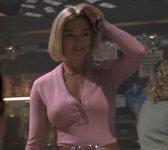AH_Mod
Experienced
- Joined
- Sep 15, 2015
- Posts
- 175
I'm not ignoring the reports. I eliminated the worst, pure trolling from one individual, and I'm letting the rest remain on record, because the thread was brought back on topic without derailing into political hyperventilation. There's something to be said for leaving the receipts of bad behavior on record. If it goes off the rails based on those posts I left up, I'll eliminate them and the fallout.
My ultimate goal has always been to nudge the AH to police itself, and this thread demonstrates we're capable of that.
My ultimate goal has always been to nudge the AH to police itself, and this thread demonstrates we're capable of that.
